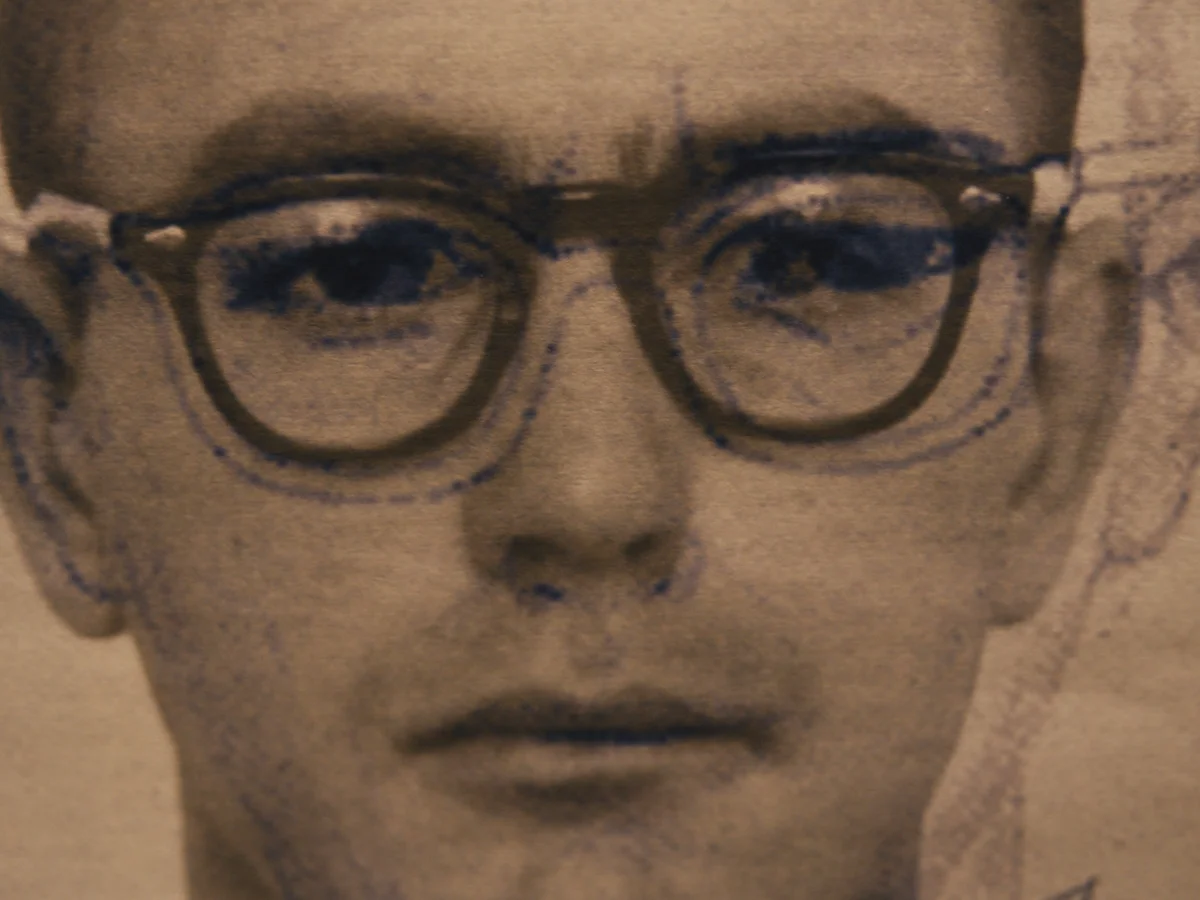Hunting In The Past#3
A delightful greeting!
“Ah, greetings noble Enchanted Potato, thou dost shine so bright!
Pray tell, what magical tales dost thou bring to share with us today?”
Greetings my dear hunters today our target is a little, today we are going to hunt a few celebrities in the community, no they are not famous for their killing count or for the animalist nature or the violence, but they were famous for the mystery that they have created, the world remembers them for the story that they have given to the world. So without wasting any time let’s get started with the bounty.
Bounty No. 1
The Zodiac killer remains one of the most enigmatic and chilling figures in American criminal history. Active in the late 1960s and early 1970s, this unidentified serial killer was responsible for at least five confirmed murders in Northern California. However, the true number of his victims may be higher.

Early Life and Background
Much about the Zodiac Killer’s early life remains shrouded in mystery. Unlike many other notorious killers, we have no confirmed background information on the Zodiac, including his upbringing, family life, or any events that might have shaped his path toward becoming a murderer. This anonymity has only added to the macabre allure and fascination surrounding him.
Intentions and Modus Operandi
The Zodiac Killer’s intentions were multifaceted. He sought not only to commit murder but also to gain infamy through his crimes. His method of operation involved attacking young couples in remote areas, using firearms or knives, and then taunting the police and the public with cryptic letters and ciphers. These communications, sent to newspapers and law enforcement, were filled with bizarre symbols, threats, and braggadocio. The Zodiac’s letters were crucial to his psychological warfare. By engaging the media and law enforcement in a cat-and-mouse game, he ensured that his name would become synonymous with fear. His ability to evade capture despite being so brazen added to his infamy.
The Killings and Evidence
The Zodiac’s first confirmed murders took place on December 20, 1968, when high school students Betty Lou Jensen and David Faraday were shot and killed near Vallejo, California. Over the next year, he went on to commit several more murders, each attack characterized by a cold and calculated brutality. The Zodiac Killer’s communications often included chilling details about the murders that only the killer would know, further corroborating his claims. One of his most infamous letters, the “340 Cipher,” remained unsolved for over 50 years until it was finally cracked in 2020. Despite this breakthrough, the identity of the Zodiac Killer remains elusive.
The Unfinished Legacy and Lack of Punishment
Despite the intense investigation and numerous suspects over the years, the Zodiac Killer was never caught. His crimes remain officially unsolved, leaving a haunting legacy. This lack of resolution has kept the case alive in public consciousness, spawning numerous books, documentaries, and even a major motion picture. The fact that the Zodiac Killer was never brought to justice has only added to his mystique. While various theories and potential suspects have been proposed over have not been definitively proven. As a result, the Zodiac’s true identity and motives remain a source of speculation and intrigue.
The Zodiac Killer’s Motto
The Zodiac Killer’s motto seemed to be encapsulated in his own words: “I like killing people because it is so much fun.” This chilling statement, included in one of his letters, underscores the remorseless and sadistic nature of his character. His primary motivation was the thrill and power derived from taking human lives and instilling fear in an entire region.
In conclusion, the Zodiac Killer’s story is a dark testament to the depths of human depravity and the enduring mystery that can surround such malevolent figures. As long as his true identity remains unknown, the Zodiac Killer will continue to haunt the annals of criminal history, a ghostly figure lurking in the shadows of mysteries.
Bounty no. 2
The Otaku Killer, also known as Tsutomu Miyazaki, is a name that evokes horror and fascination. His crimes, committed in late 1980s Japan, shocked the nation and led to a widespread moral panic against otaku culture.

Early Life and Background
Tsutomu Miyazaki was born on August 21, 1962, in Itsukaichi, Tokyo. He was born prematurely with a rare birth defect called radioulnar synostosis, which fused his hand joints, preventing him from bending his wrists upwards. Miyazaki’s family was wealthy and influential.
Punishments and Legal Proceedings
Miyazaki was arrested in July 1989 after being caught taking nude photographs of a young girl. He was diagnosed with personality disorders but was deemed sane and aware of his crimes. In 1997, he was sentenced to death, and he was executed by hanging in 2008.
Intentions and Modus Operandi
Miyazaki’s intentions were driven by a disturbing combination of psychological disorders and a deep-seated obsession with anime, manga, and horror videos. Between August 1988 and June 1989, he abducted, murdered, and mutilated four young girls, aged between 4 and 7, in Tokyo and Saitama Prefecture. He would take his victims to secluded areas, where he committed the murders, often dismembering their bodies and engaging in acts of cannibalism
The Killings and Evidence
Miyazaki’s crimes were marked by a chilling level of premeditation and cruelty. He sent disturbing letters and packages to the families of his victims, including photos of the girls, teeth, and postcards with messages like “Mari. Cremated. Bones. Investigate. Prove.” His home contained a vast collection of disturbing materials, including snuff films, graphic violent content, and photographs of his victims.
The Otaku Killer’s Motto
Miyazaki’s actions were driven by a twisted sense of power and control. His motto, if it could be distilled into words, might be the perverse satisfaction he derived from inflicting pain and fear on his victims and their families.
In conclusion, Tsutomu Miyazaki’s story is a harrowing reminder of the depths of human depravity and the impact of psychological disorders on behavior. His crimes not only devastated the families of his victims but also led to a broader societal backlash against otaku culture in Japan. The legacy of the Otaku Killer continues to be a subject of fascination and horror, a stark example of the dark side of human nature.
However, he was largely raised by his grandfather and an intellectually disabled nanny due to his parents’ busy schedules. He faced bullying and ostracism in school due to his deformity, which led him to become a loner.
Bounty No. 3
Ted Bundy stands as one of the most notorious and enigmatic figures in the annals of criminal history. His crimes, which spanned the 1970s, have left an indelible mark on our collective consciousness. This blog delves into the early life, intentions, heinous acts, punishments, and twisted motto of Ted Bundy.

Early Life and Background
Born Theodore Robert Cowell on November 24, 1946, in Burlington, Vermont, Bundy’s early life was marked by a facade of normalcy. He was raised by his grandparents, believing his mother was his sister. This deception was later revealed to him, leading to feelings of betrayal and confusion. Bundy moved to Tacoma, Washington, where he was adopted by his stepfather and took the surname Bundy.
Bundy was a bright student, exuding charm and intelligence, qualities that masked his dark inclinations. He attended the University of Washington, studying psychology, and later law school, where his outward appearance of ambition and normalcy hid his burgeoning murderous tendencies.
Intentions and Modus Operandi
Bundy’s intentions were driven by a deep-seated need for control, power, and a perverse sense of pleasure from inflicting pain and suffering. His modus operandi involved approaching young women, often feigning injury or disability to gain their trust. Once they were vulnerable, he would abduct, assault, and brutally murder them. Bundy’s ability to blend into society and his manipulative charm allowed him to evade capture for years. Bundy’s meticulous planning and ability to change his appearance made him a formidable and elusive predator. He often revisited the bodies of his victims, further showcasing his depravity. His crimes were not just acts of violence but were laced with psychological torment, leaving a trail of devastation in their wake.
The Killings and Evidence
Bundy’s reign of terror began in the early 1970s, with his first confirmed murders occurring in 1974. His victims, primarily young women, were often lured from college campuses or public places. The true extent of his crimes remains unknown, but Bundy confessed to 30 murders across several states, although the actual number is believed to be higher. Bundy’s capture came after a series of arrests for lesser crimes, but his eventual escape from custody in Colorado in 1977 and subsequent killing spree in Florida led to his final capture. The evidence against him was overwhelming, including eyewitness testimonies, physical evidence, and his confessions.
Punishments and Legal Proceedings
Bundy’s trial was a media sensation, characterized by his audacious self-representation and the horrific details of his crimes. In 1979, he was convicted of the murders of two Florida State University sorority sisters and a 12-year-old girl. He received three death sentences and spent nearly a decade on death row.
Despite numerous appeals, Bundy was executed in the electric chair on January 24, 1989. His execution was a spectacle, with crowds gathering outside the prison, celebrating the end of one of America’s most feared killers.
Ted Bundy’s Motto
Bundy’s actions and statements reveal a chilling motto: a twisted pursuit of power and domination over his victims. He once chillingly remarked, “I’m the most cold-hearted son of a bitch you’ll ever meet.” This statement encapsulates his remorseless and sadistic nature.
In conclusion, Ted Bundy’s story is a grim reminder of the depths of human depravity and the monstrous capabilities that can lurk beneath a veneer of normalcy. His crimes and the media frenzy they generated have left a lasting legacy, serving as a cautionary tale about the potential for evil in our midst.
Discover more from Ge-erdy Verse
Subscribe to get the latest posts sent to your email.



